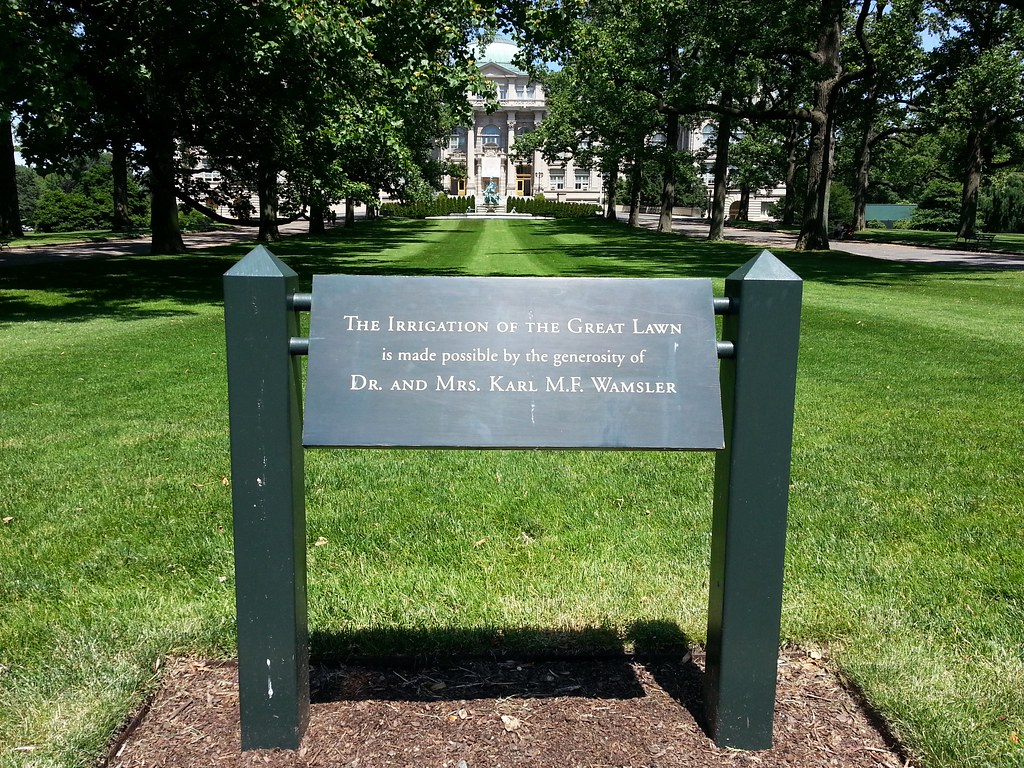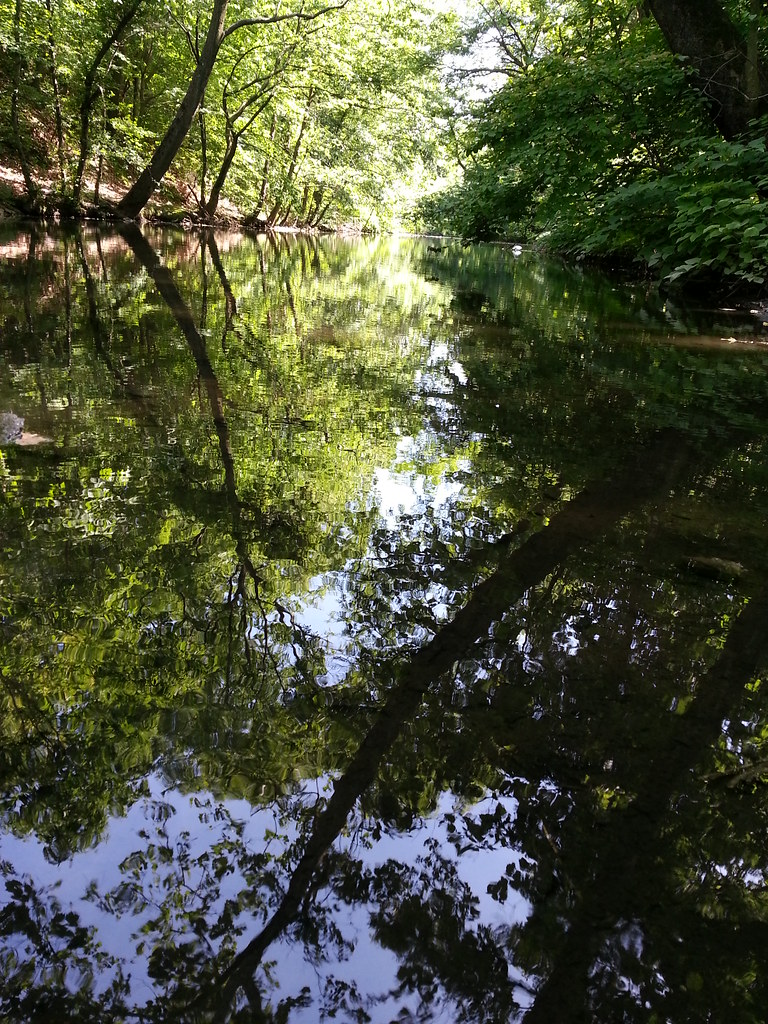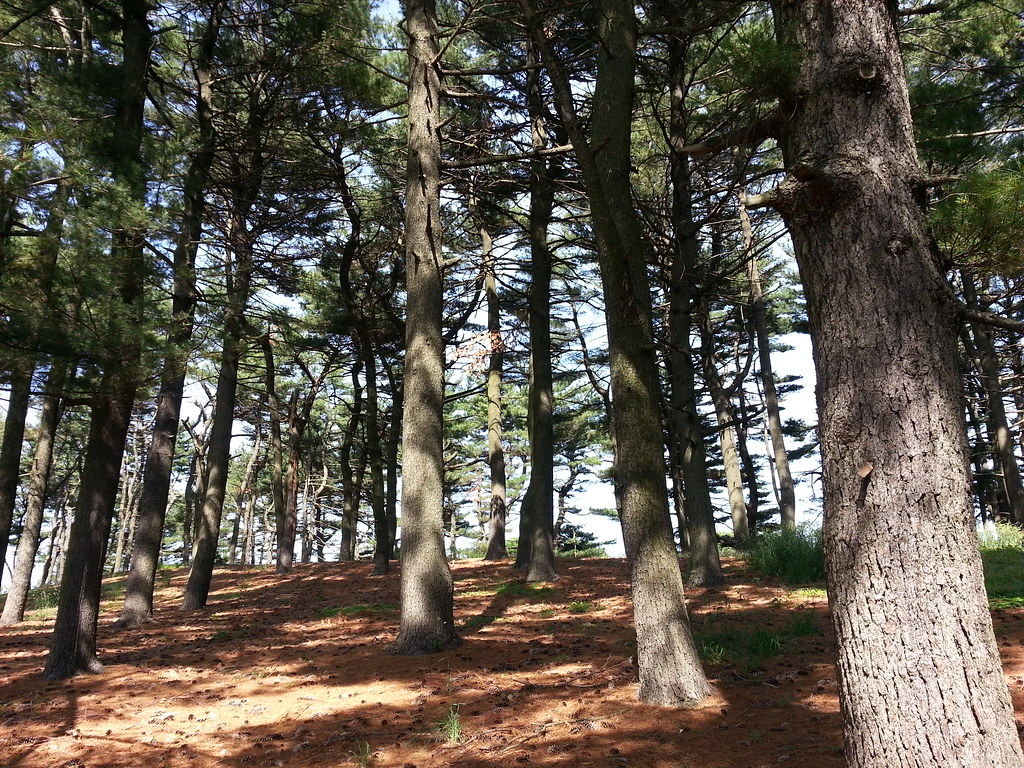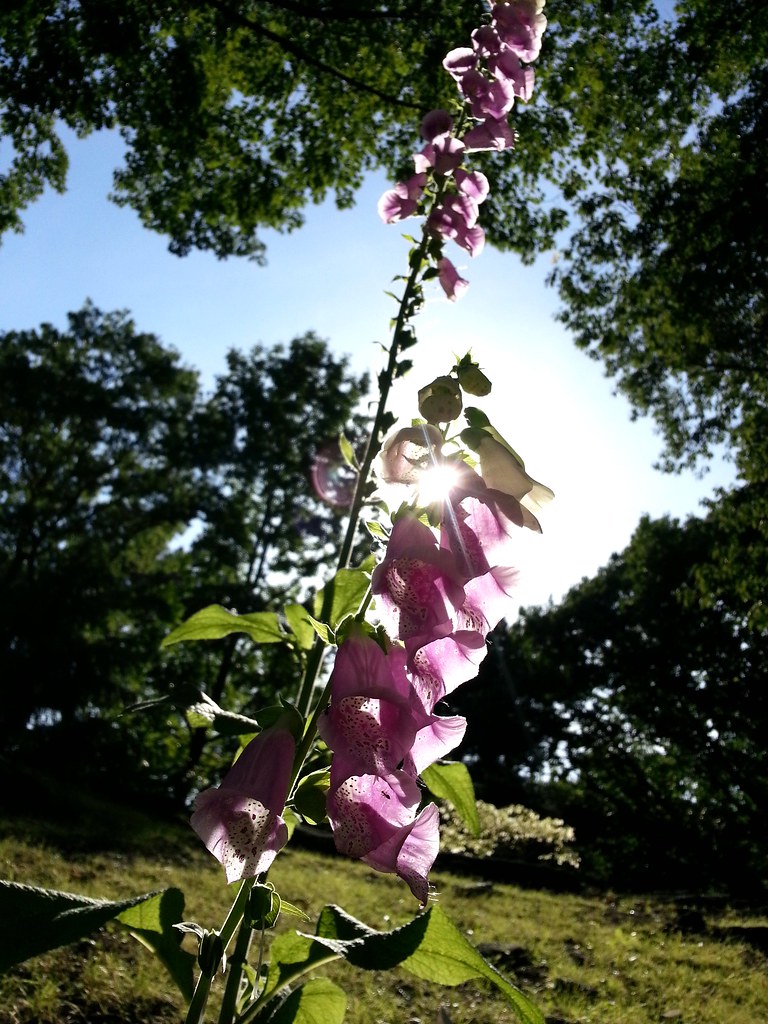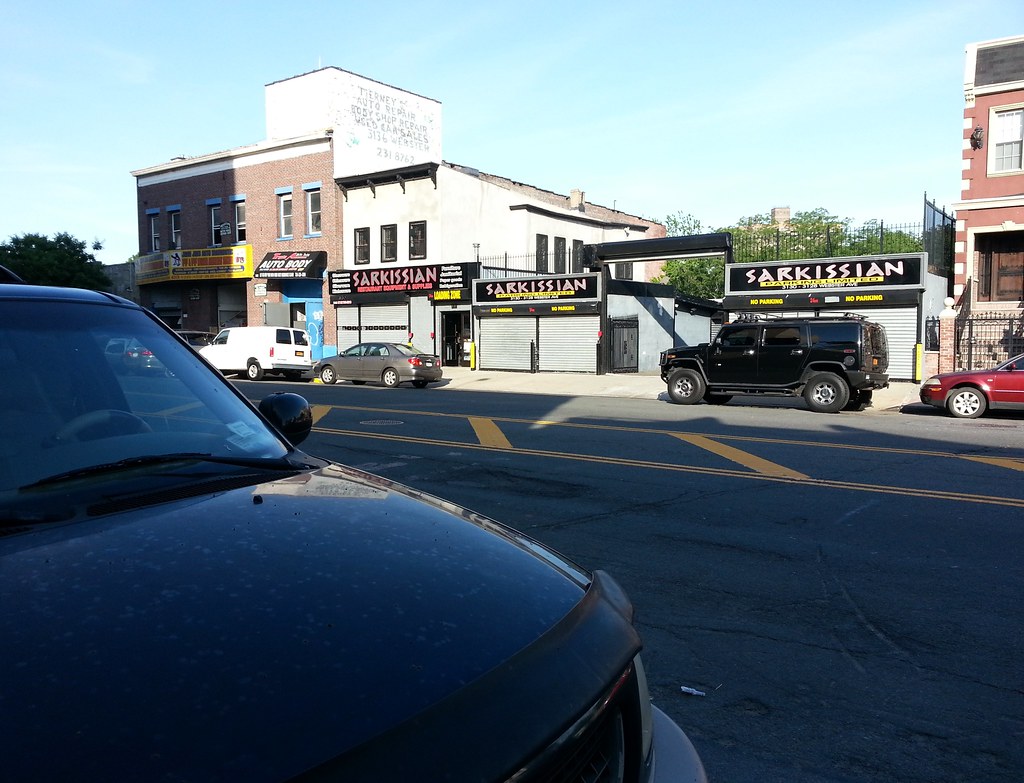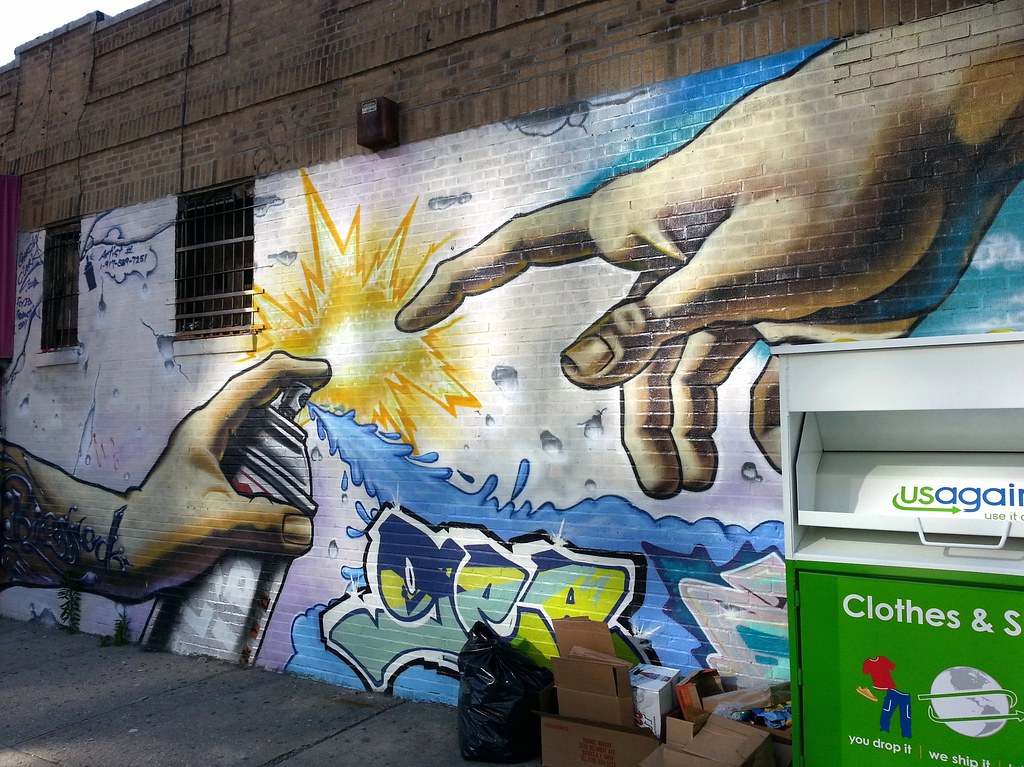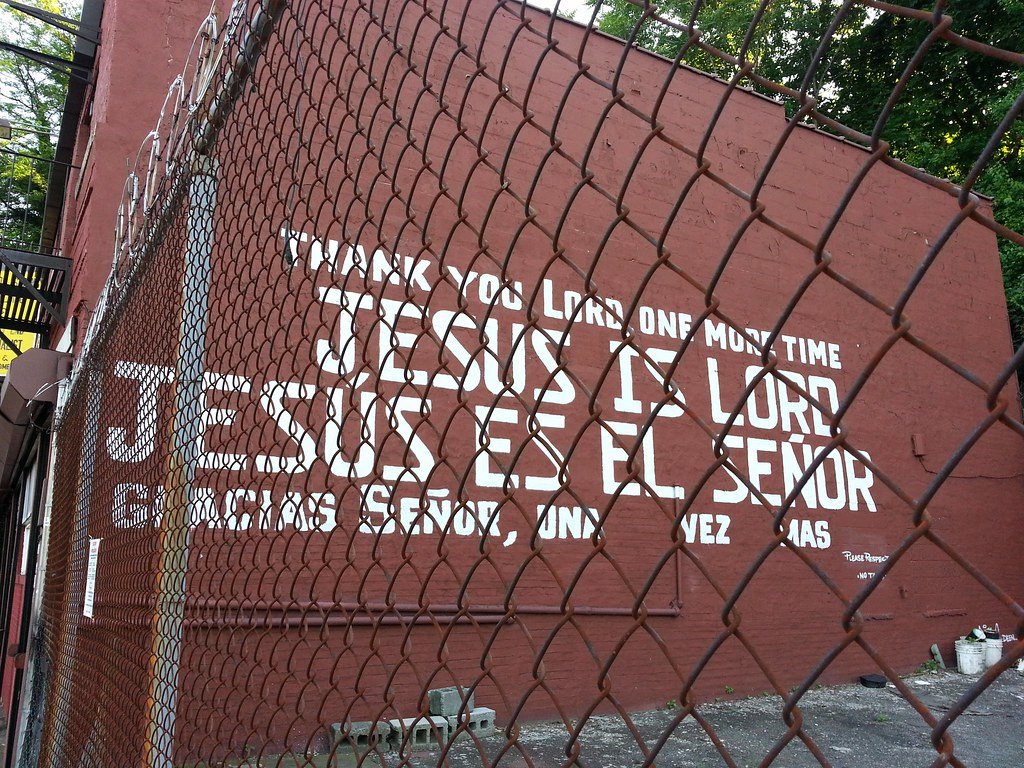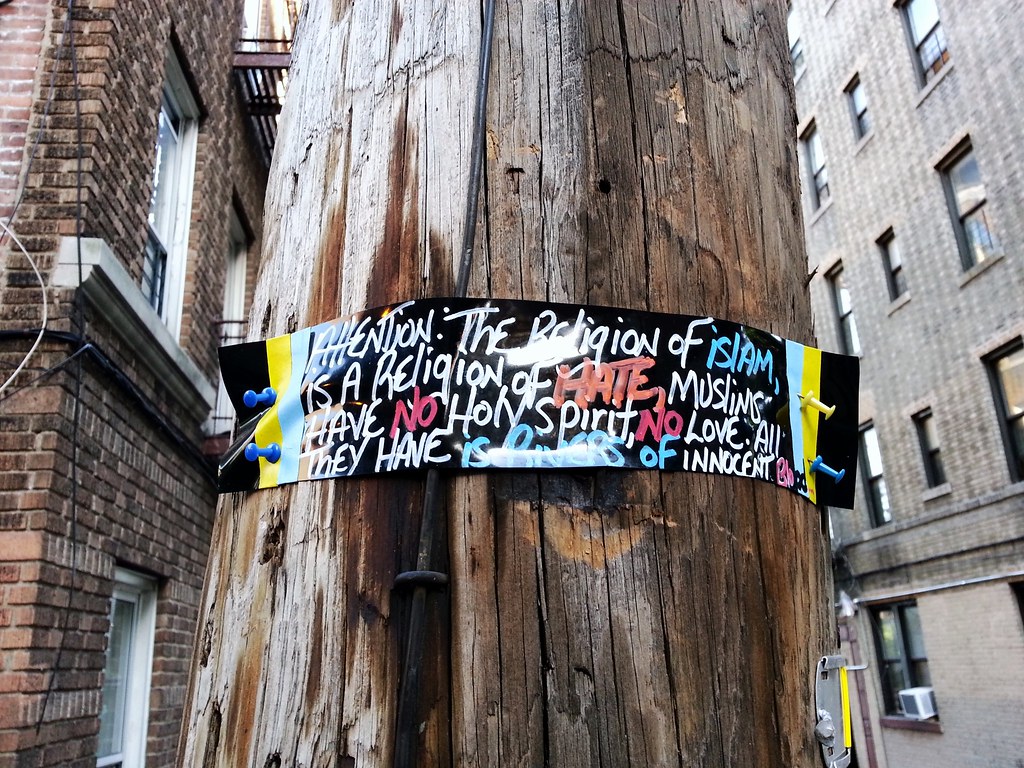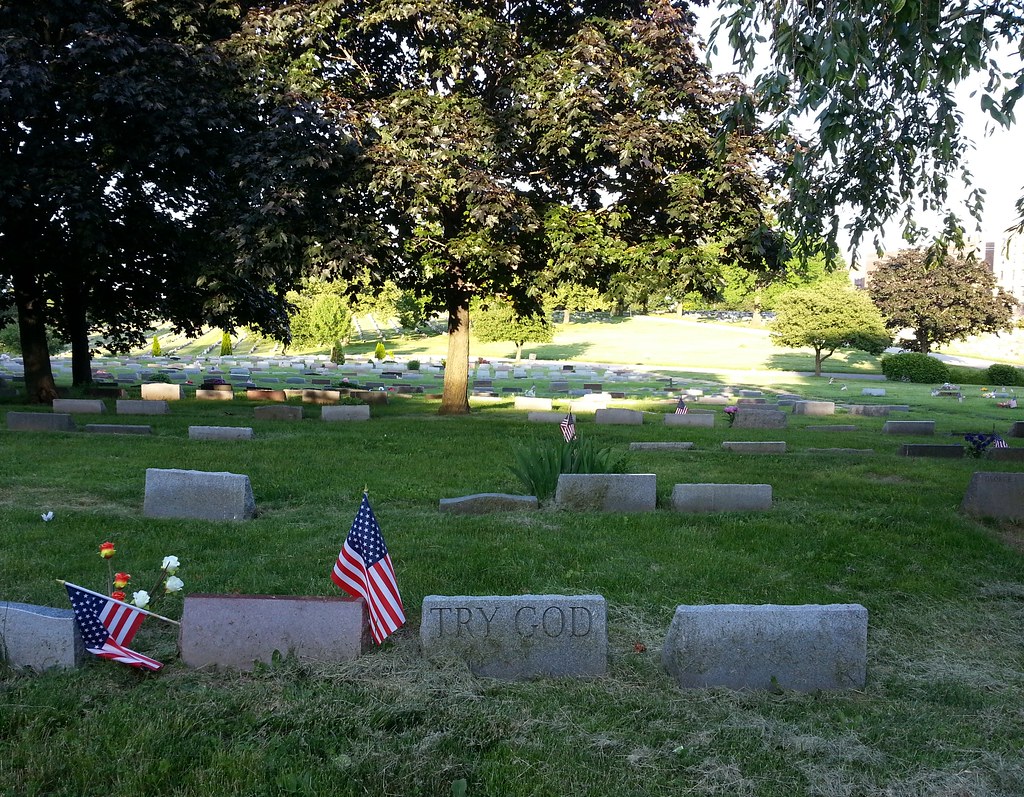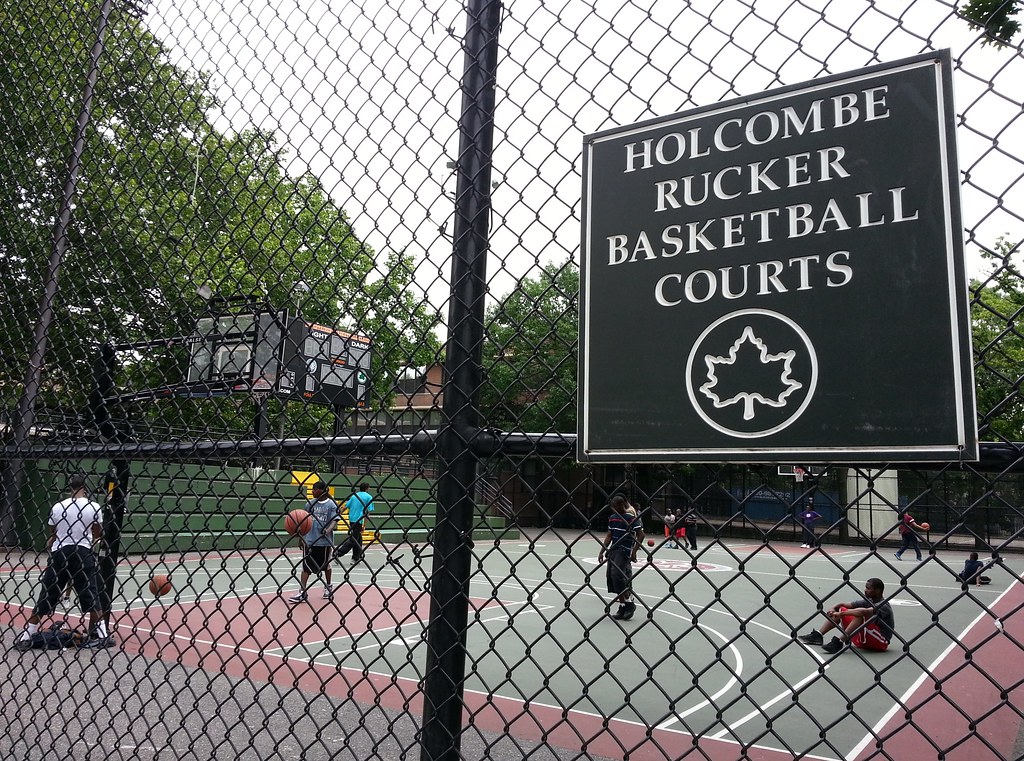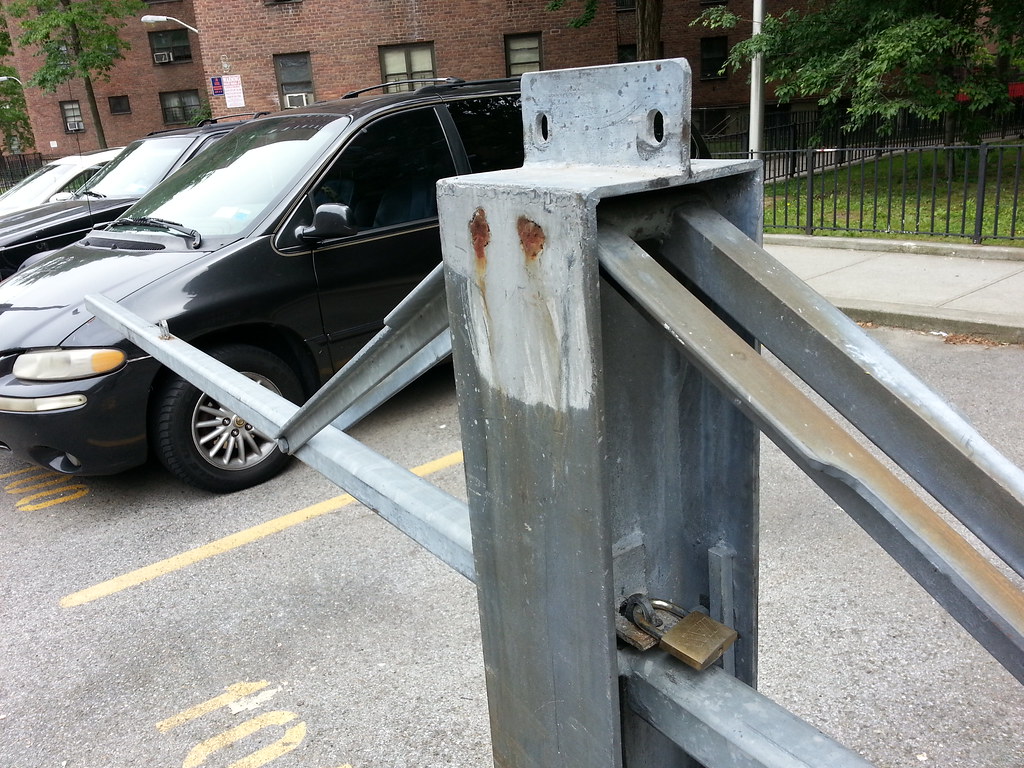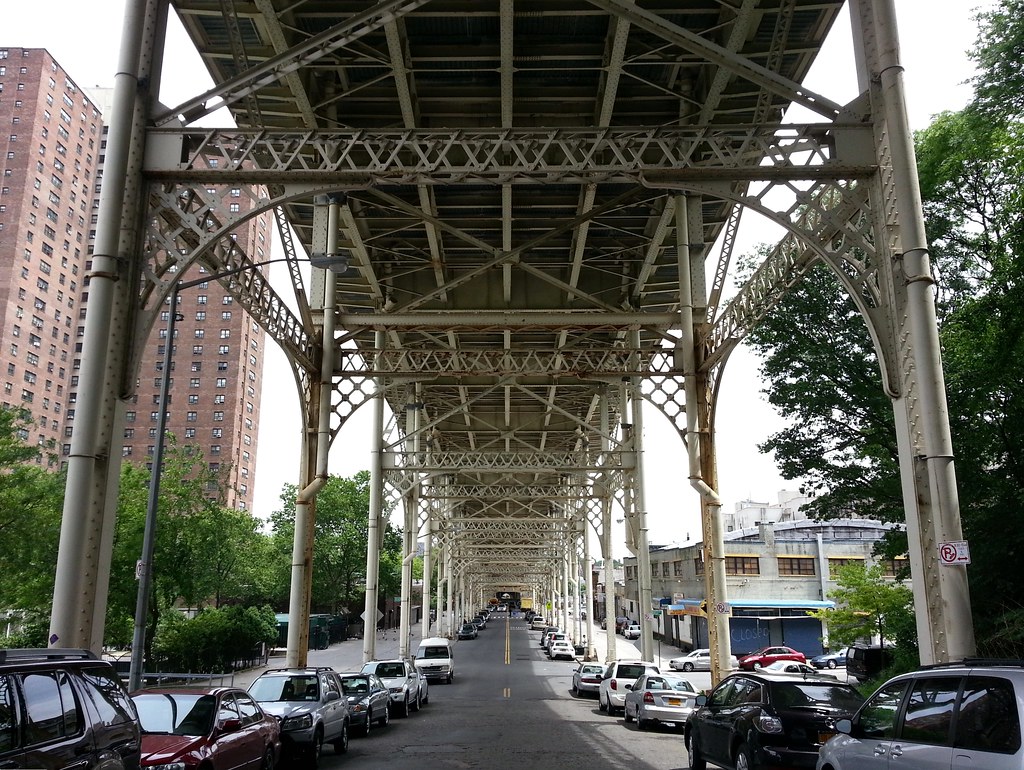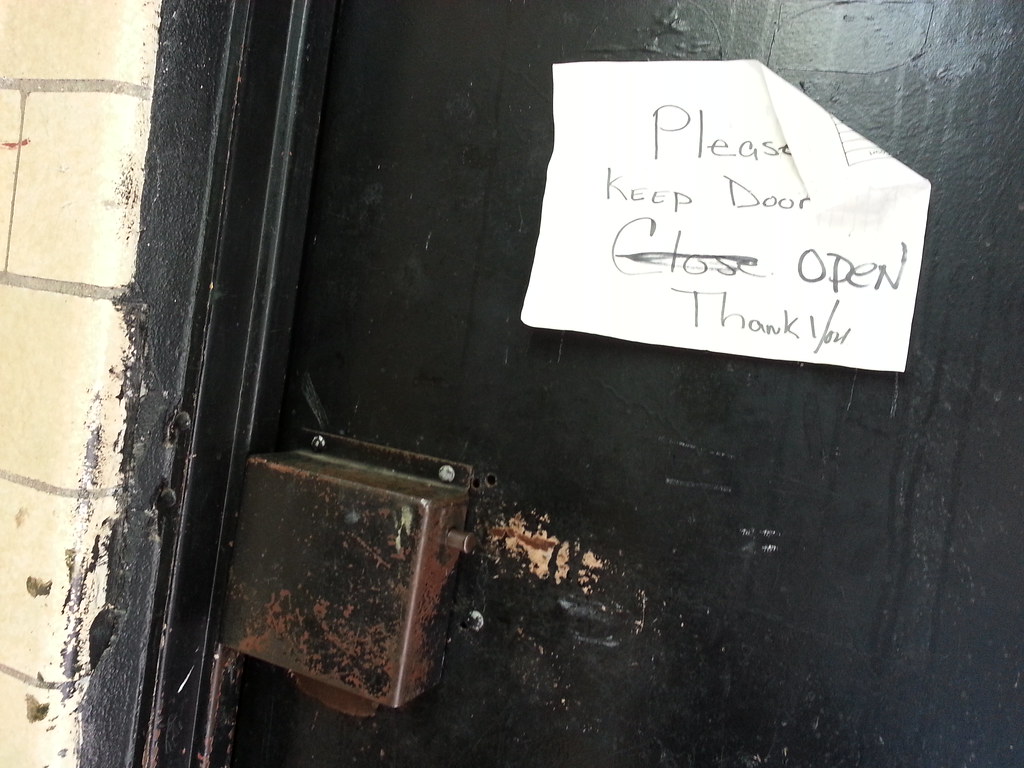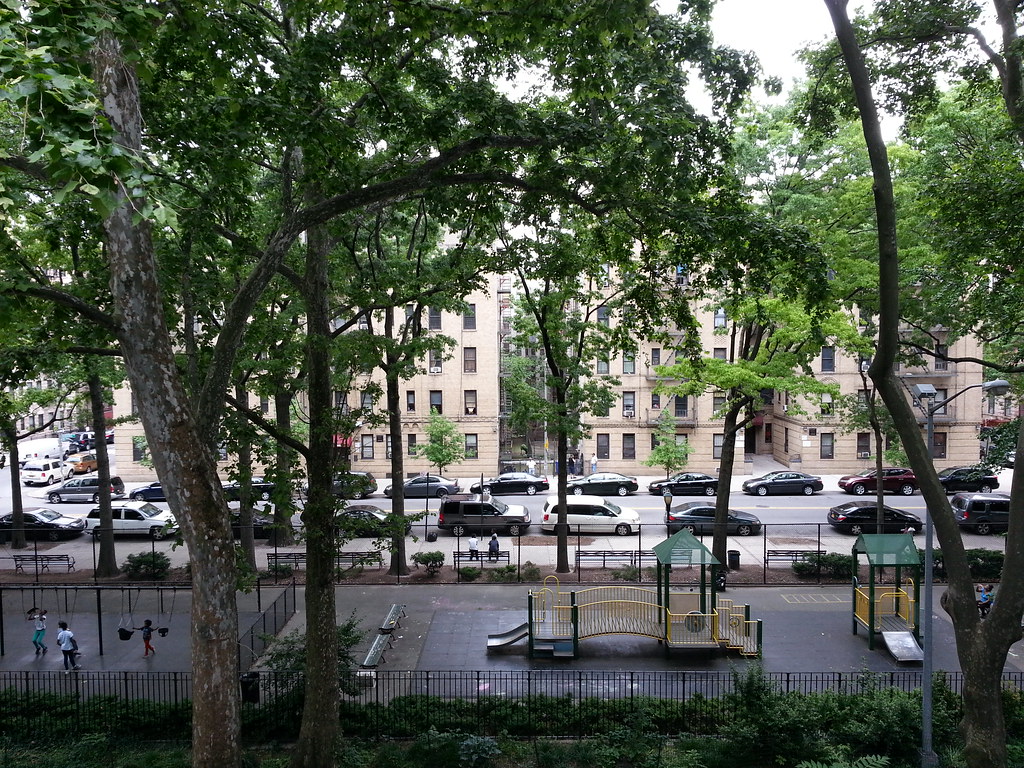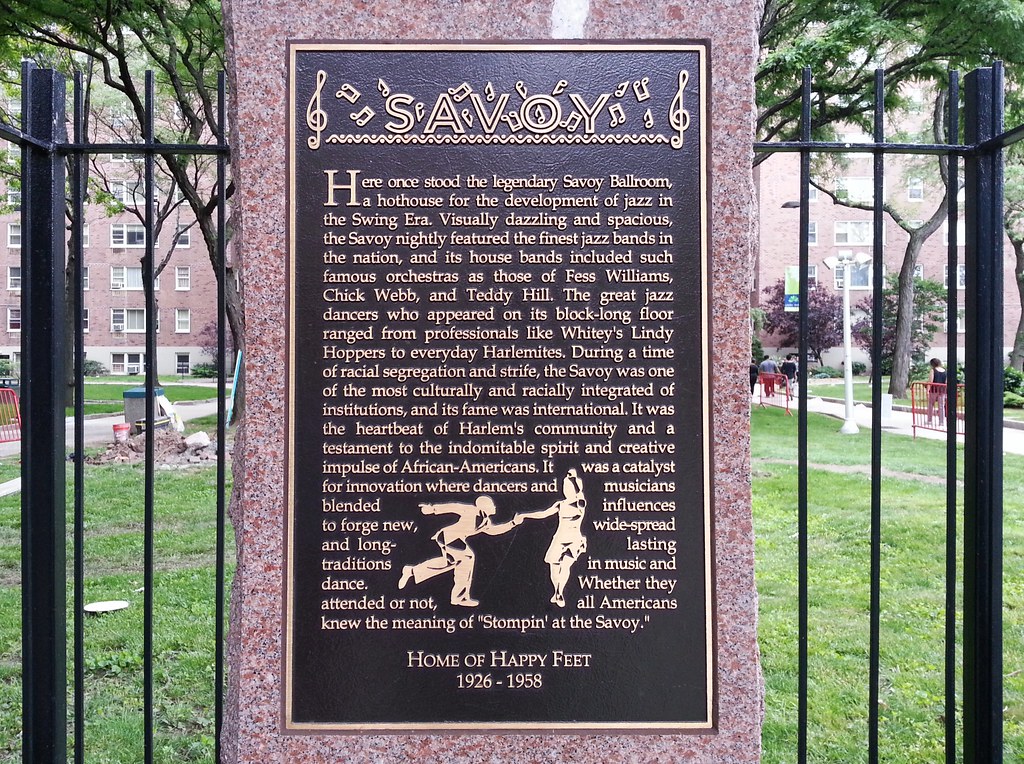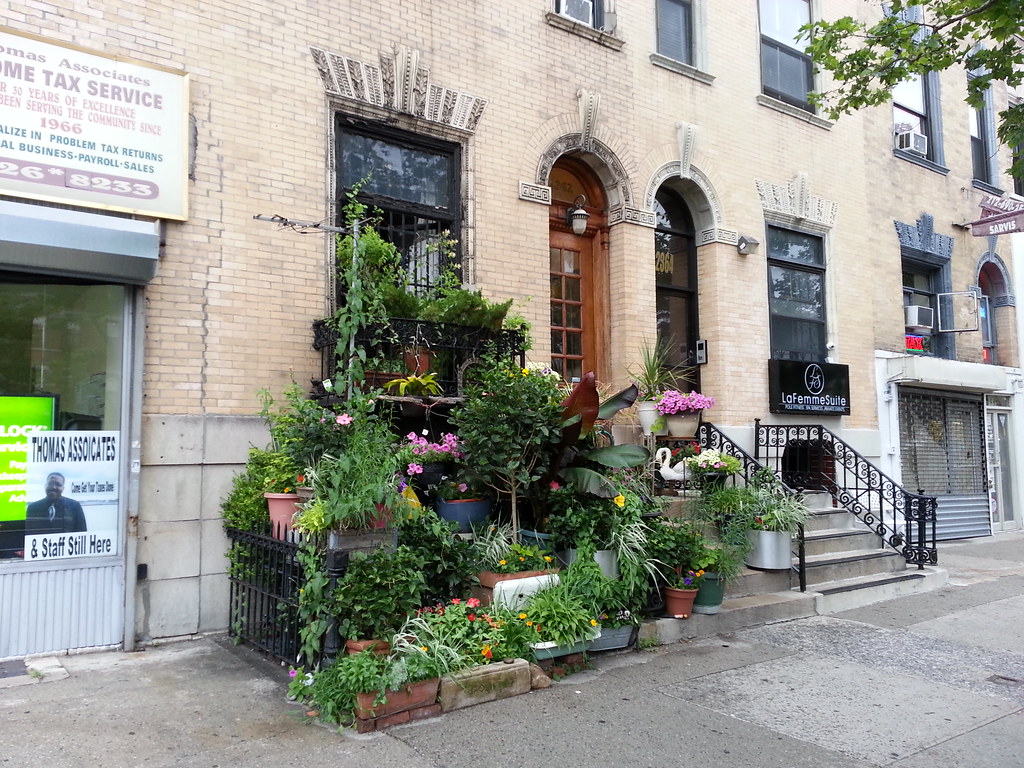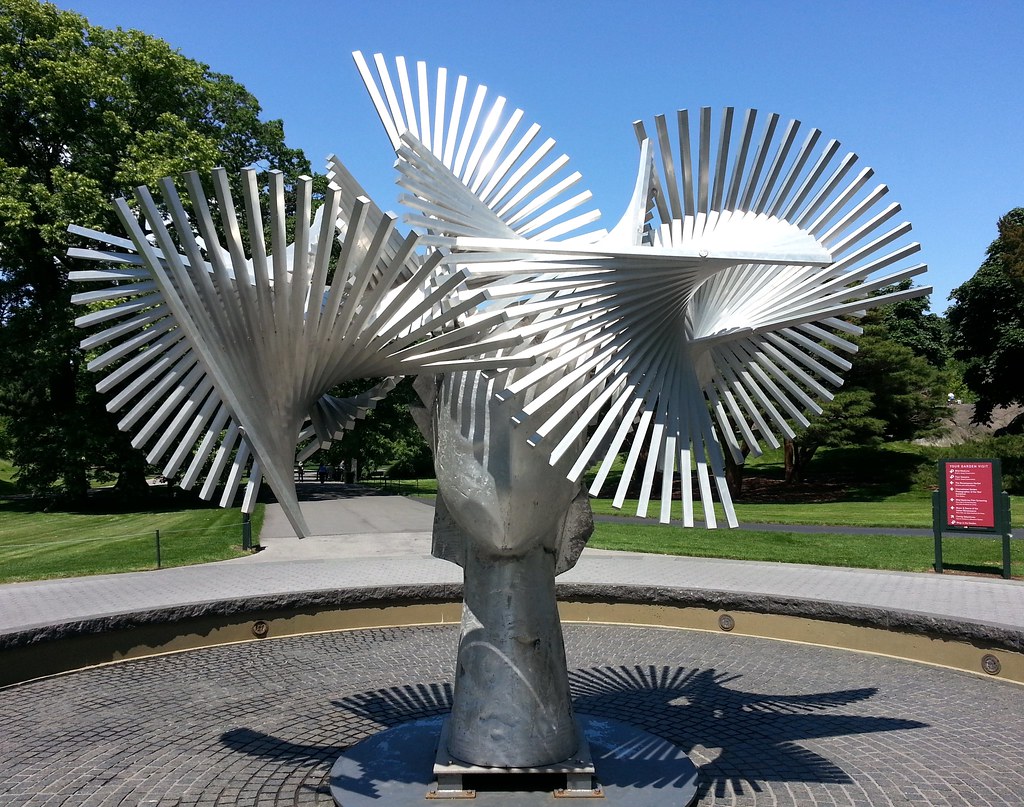
One of seven monumental sculptures in Manolo Valdés's Manolo Valdés: Monumental Sculpture (awesome name) exhibition at the New York Botanical Garden. These giant women's heads were supposedly only going to be on view until May 26, but they seem to have hung around at least an extra ten days.
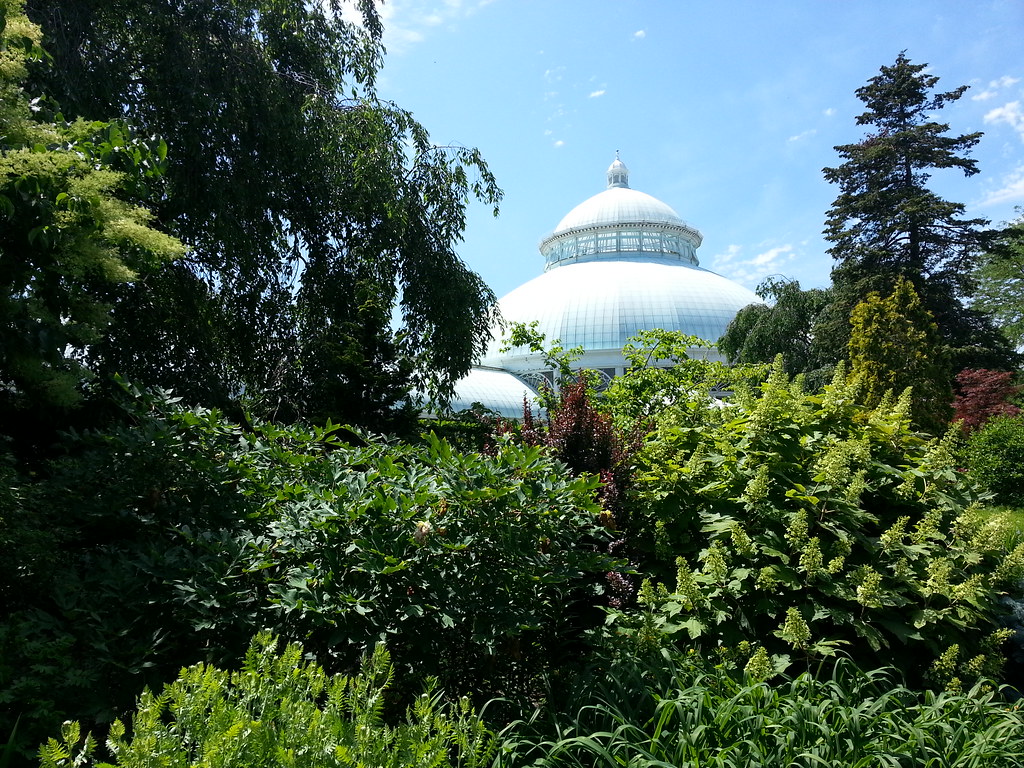
The spectacular Enid A. Haupt Conservatory (admission not included with the free grounds-only pass)

Unaffected by Dutch elm disease, this American elm lives in the very well-labeled 50-acre Thain Family Forest, "the last remnant of the 17th-century woodlands that once blanketed the region, the same woods in which the Lenape Indians hunted, with some of the same trees standing."

Tucked away off the main drag in an otherwise flowerless section of the garden is this surprising burst of color. According to a nearby sign:
In the spring of 2010 The New York Botanical Garden became host to the first EarthKind Northeast Rose Trials.
The goal of the EarthKind program is to identify cultivars that combine beauty with proven durability in the landscape. The EarthKind philosophy is based on the premise that it is possible to grow stunning roses that tolerate harsh environments without agricultural chemicals and with a reduction in irrigation. The first EarthKind trials began almost 15 years ago in the middle of a Texas field, where rosarians planted 60 different kinds of roses. Their goal was to find environmentally friendly specimens that were drought tolerant and that required little in the way of fertilizers and pesticides. To date, 21 rose varieties have succeeded in the Texas trials. EarthKind trials are currently underway in 25 states and 5 countries.
The 32 different kinds of roses here are being tested to determine the best varieties for gardens in the Northeast. In the first year of the trials, these roses will be watered, but for the next four years they will receive nothing, not even fertilizer. Those roses that survive and thrive at the end of the trial period will be designated EarthKind.
Be sure to visit the Peggy Rockefeller Rose Garden, where 20 EarthKind varieties are planted.
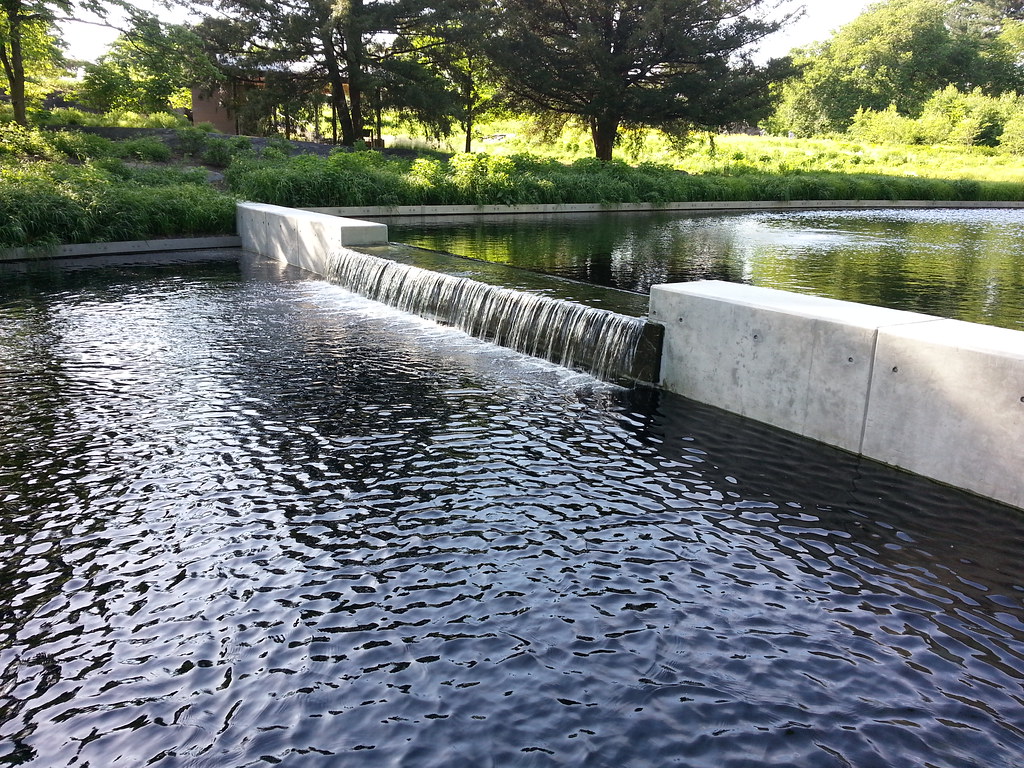
of the brand-new Native Plant Garden.
The Botanical Garden generally seems to trust its visitors, using politely worded signs, rather than imposing barriers or scolding staff members, to tell us where we're not supposed to go and what we're not supposed to do. But for some reason, out of character with the rest of the garden, there was a very stern-faced security guard stationed beside this pool, keeping a close eye on things. He seemed so serious about his mission that I'm not sure I could have even successfully sneezed into the water, much less jumped in.
In an attempt to lighten the mood, I gestured at the pool and asked him "When's swimmin' hours?" After a moment of dead silence, he responded with a rather insincere "Heh."
"Not funny, huh?" I offered. He just stared back at me blankly.
You win some and you lose some.
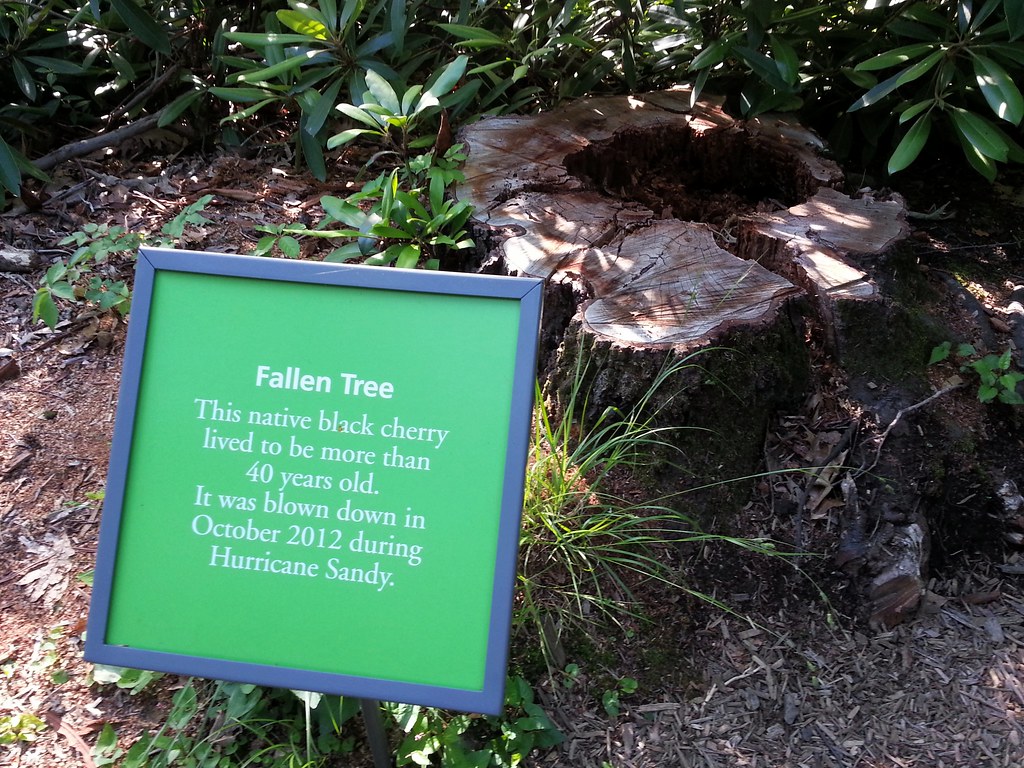
One of more than 550 the Botanical Garden lost to Hurricane Sandy
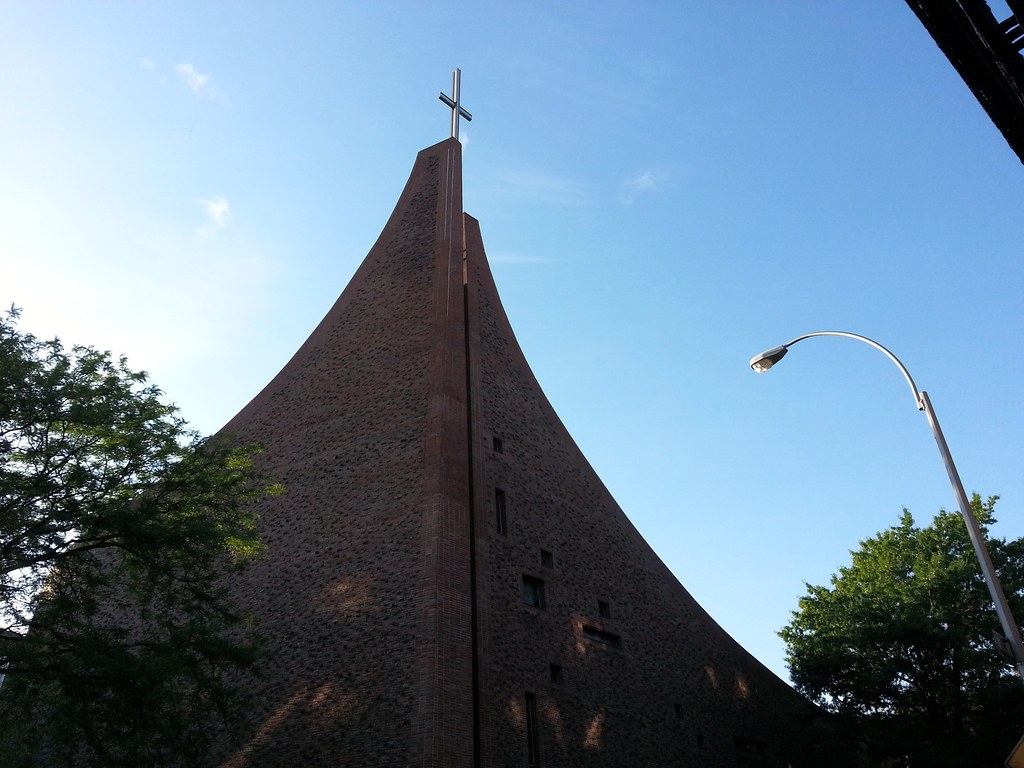
From the AIA Guide to New York City: "St. Brendan is the patron saint of navigators, so it should come as no surprise that this church was built to resemble the prow of a ship."
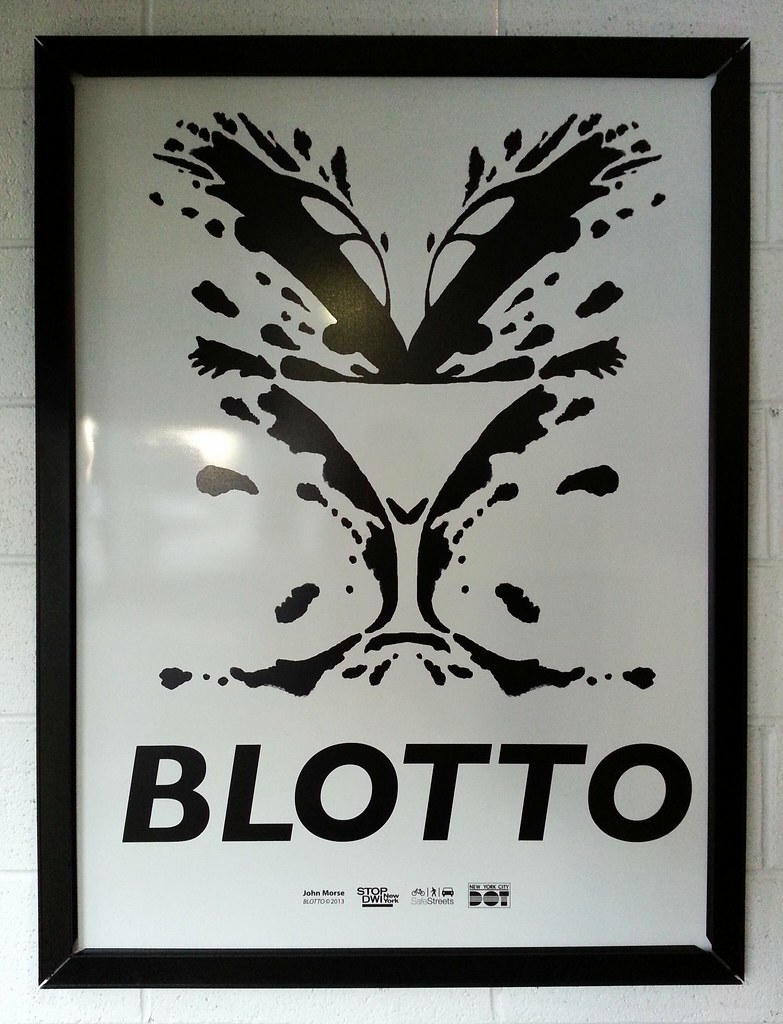
This poster is part of the city DOT's campaign against drunk driving. It was designed by the same guy who did the Curbside Haikus.
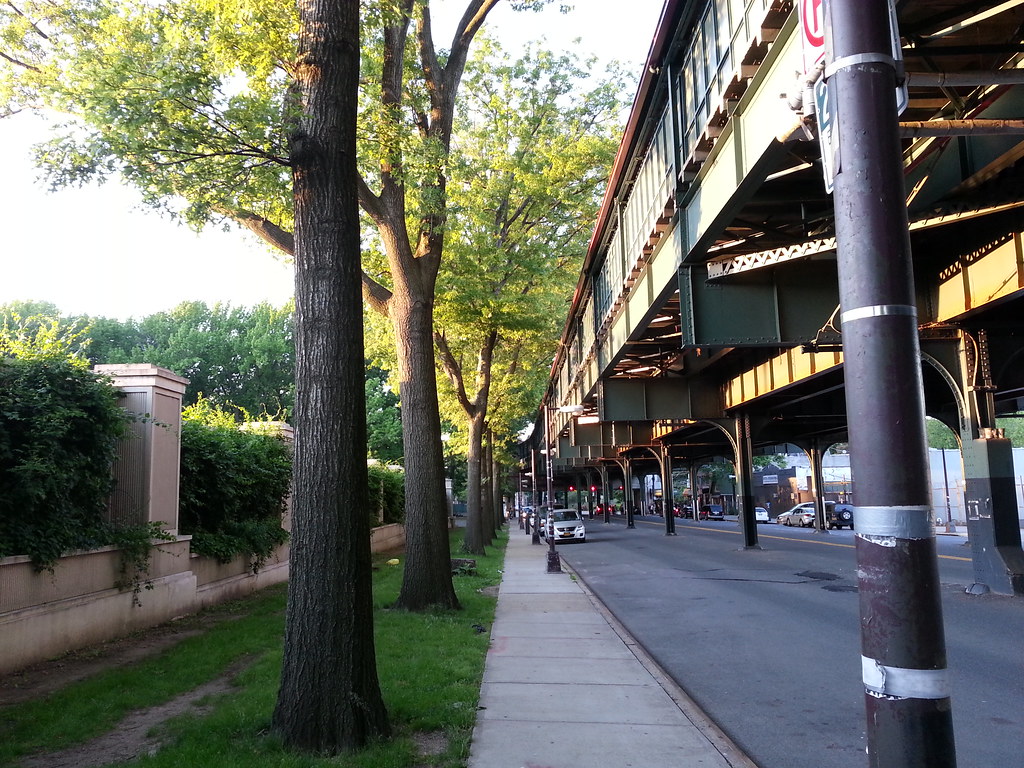
That's the 4 train's terminal station on our right.
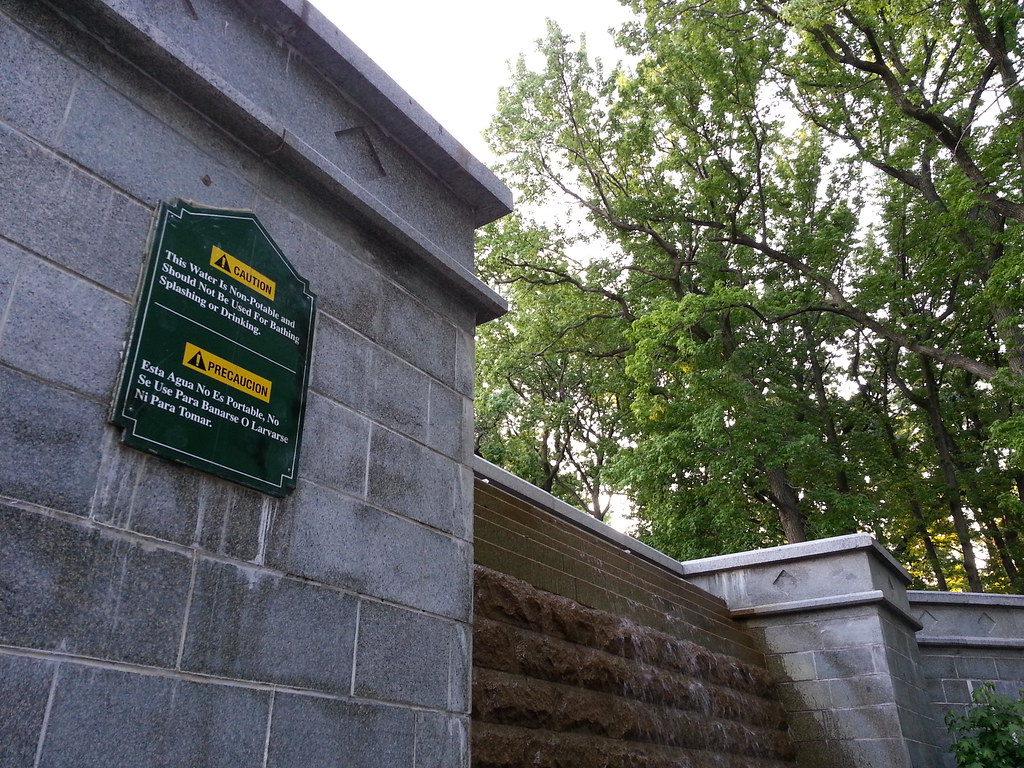
A non-potable waterfall outside the Croton Water Filtration Plant under construction (still) in Van Cortlandt Park
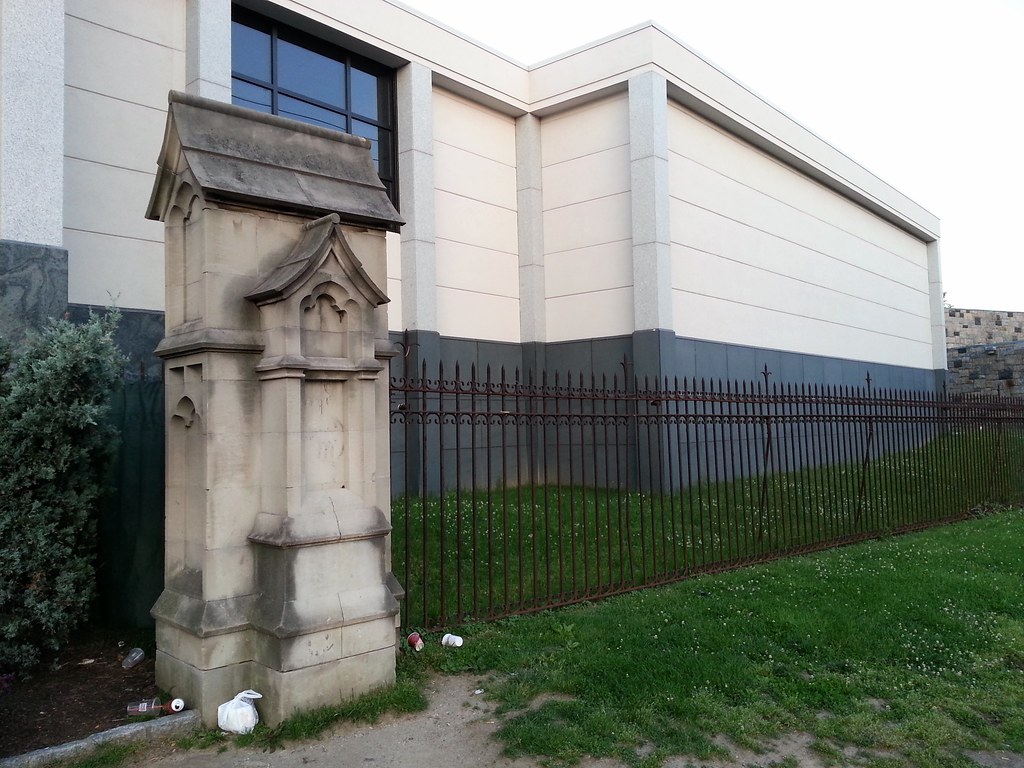
This mysterious Gothic stone pillar at the edge of Woodlawn Cemetery stands in stark contrast to the modern-looking community mausoleum built just behind it. According to the NY Times, there was once a "grand entrance" to the cemetery here at Jerome Avenue and 233rd Street. Perhaps this pillar was once part of that entrance, which was presumably demolished to make room for the mausoleum. Bolstering this theory are two facts: 1) an identical pillar is symmetrically located around the corner on the other side of the mausoleum, where the other end of the entrance would have been, and 2) parts of an existing entrance farther south on Jerome Avenue look very similar to these pillars.

Former site of — you guessed it — the Polo Grounds. Previously seen from above.

I'm almost done walking the Bronx, the home territory of these signs, but, as we now know, they've invaded Harlem as well.
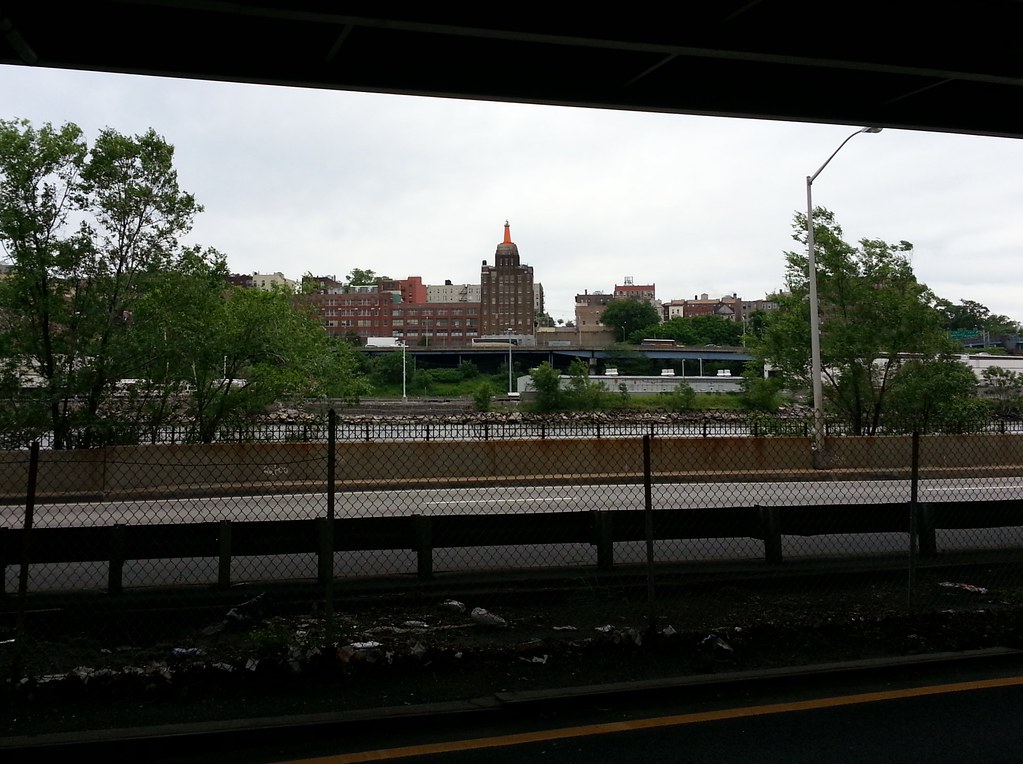
The newly orange beacon of the Bronx, as seen from the Manhattan side of the river

This staircase leads up to the foot of the Macombs Dam Bridge on the Manhattan side of the Harlem River, and its lacy iron railing bears many similarities to the fencing we saw on the bridge not too long ago. The elevated roadway in the background is the 1,600-foot-long 155th Street Viaduct, which connects the bridge to a part of the street grid that sits atop a steep hill, 110 feet above the level of the river.
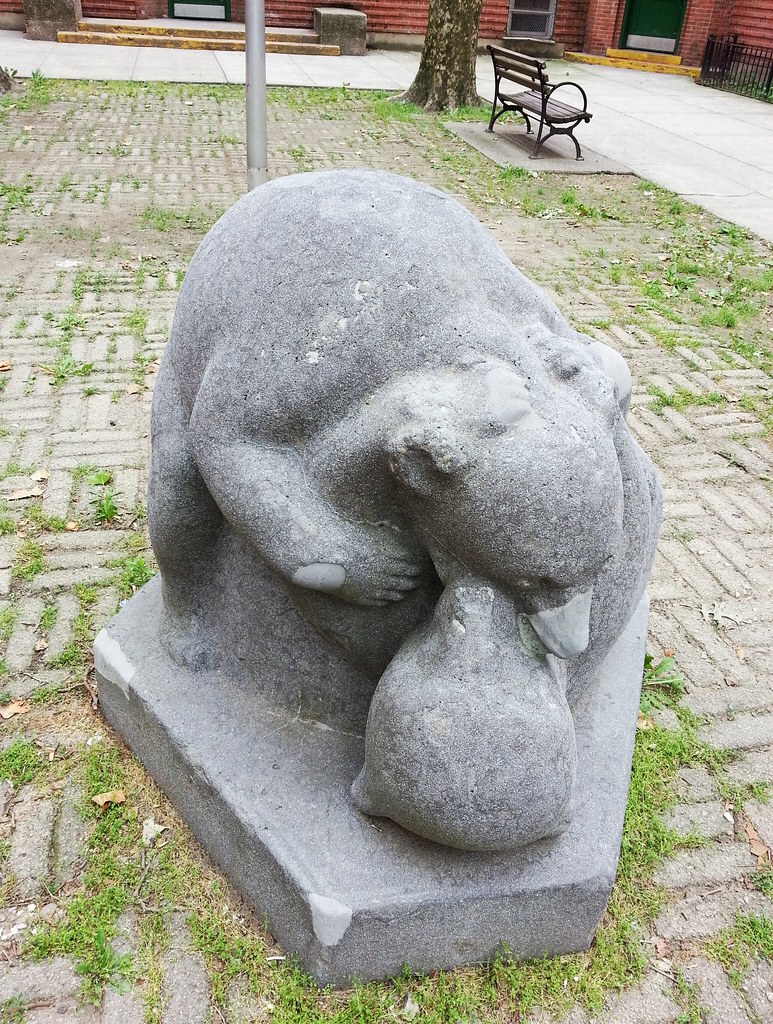
at the landmarked Harlem River Houses, opened in 1937 as New York's first federally subsidized public housing project
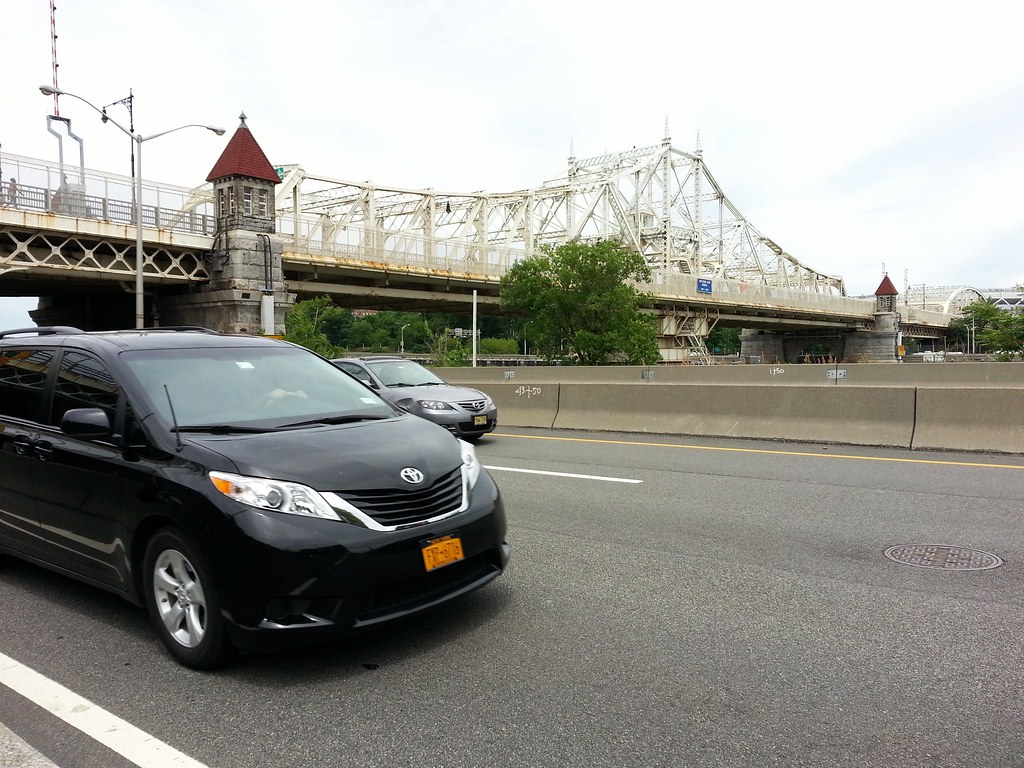
This 1895 span is not the first river crossing built at this location; that distinction belongs to the dam, constructed by Robert Macomb, that Lewis G. Morris and his comrades famously tore a hole through one night in 1838.

Dating back to the 1930s, this bandshell was just renovated a few years ago.
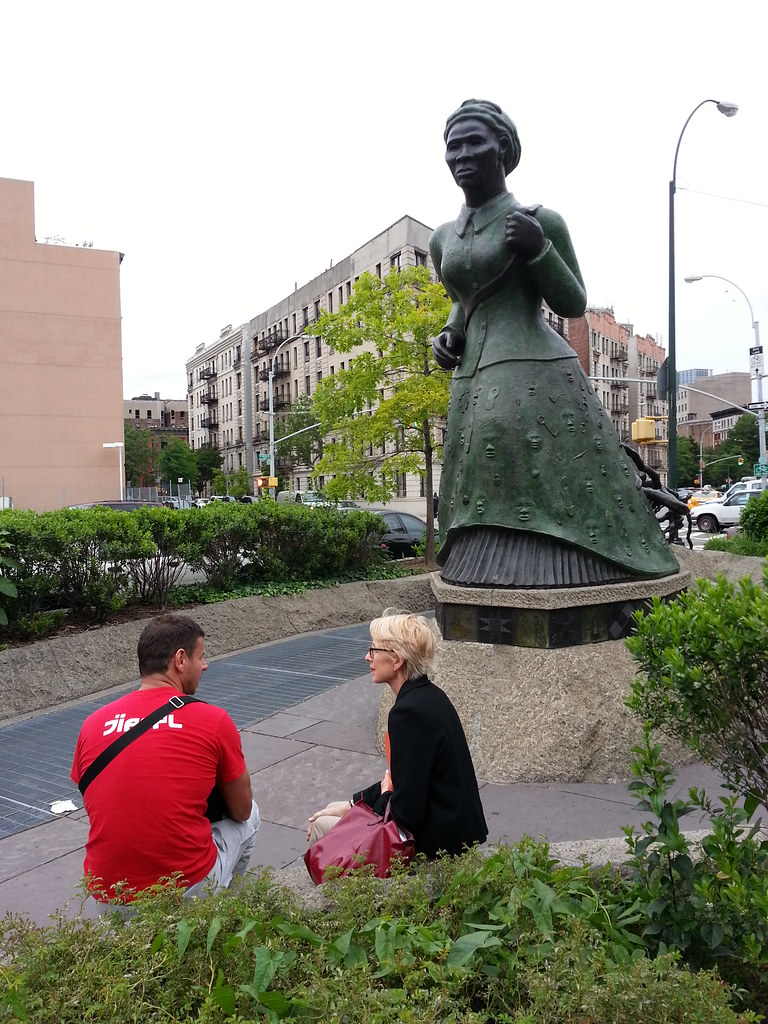
Swing Low: Harriet Tubman Memorial
You can see more detailed photos here.

This was originally the Regent Theater (interior pictures here), designed by the prolific Thomas W. Lamb and opened in 1913 as "one of the first luxurious movie theaters in New York City". The inaugural film shown here was Pandora's Box, starring our friend John Bunny.

Adding some color to an uncharacteristically overgrown patch of land in tidy Mill Basin

